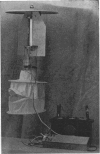Full text
PDF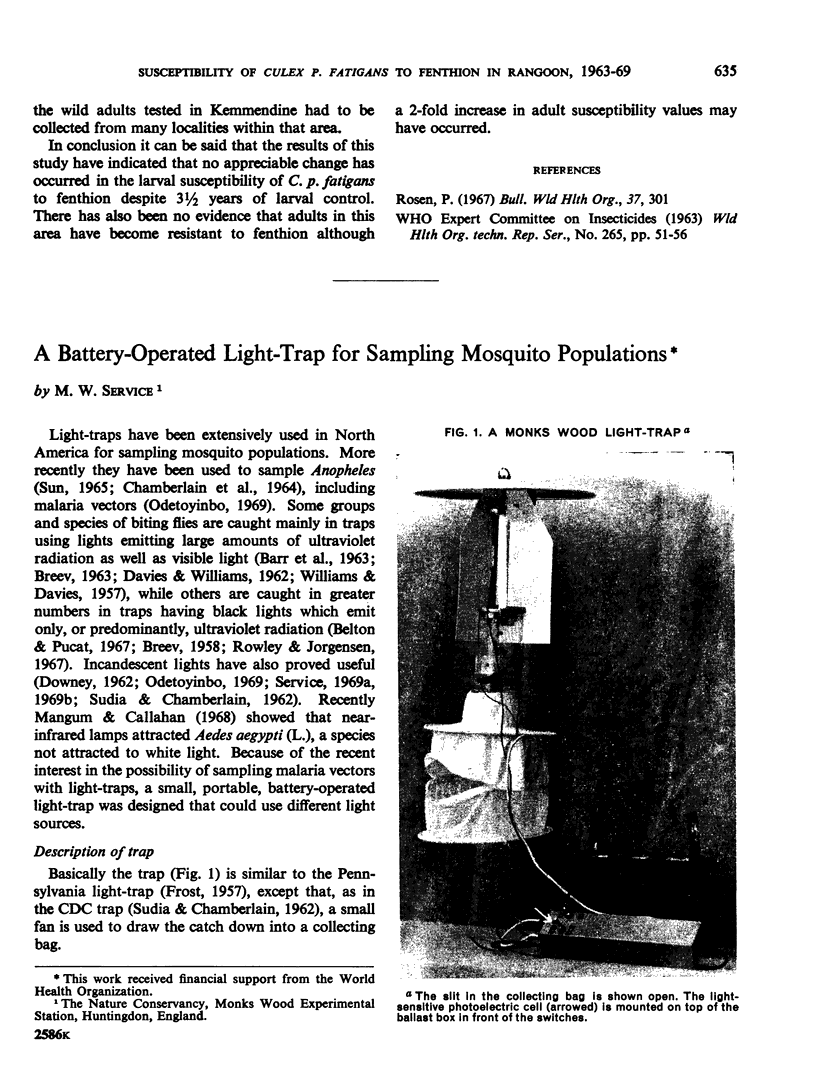
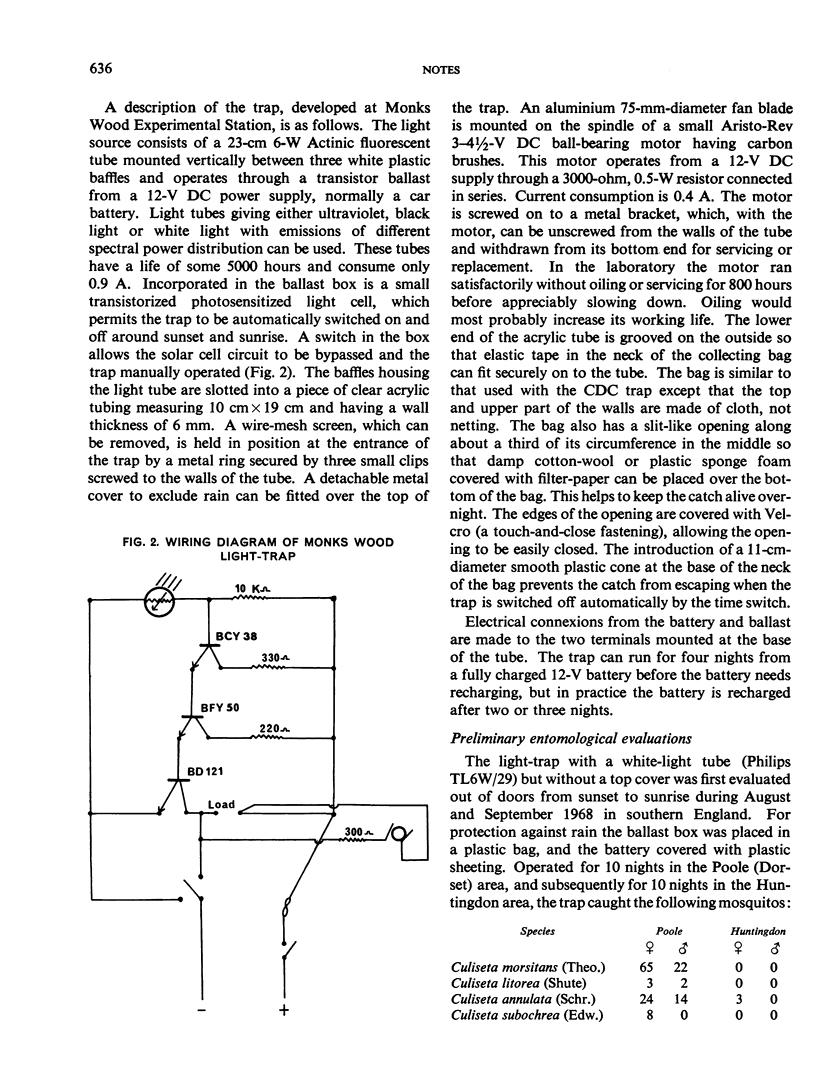
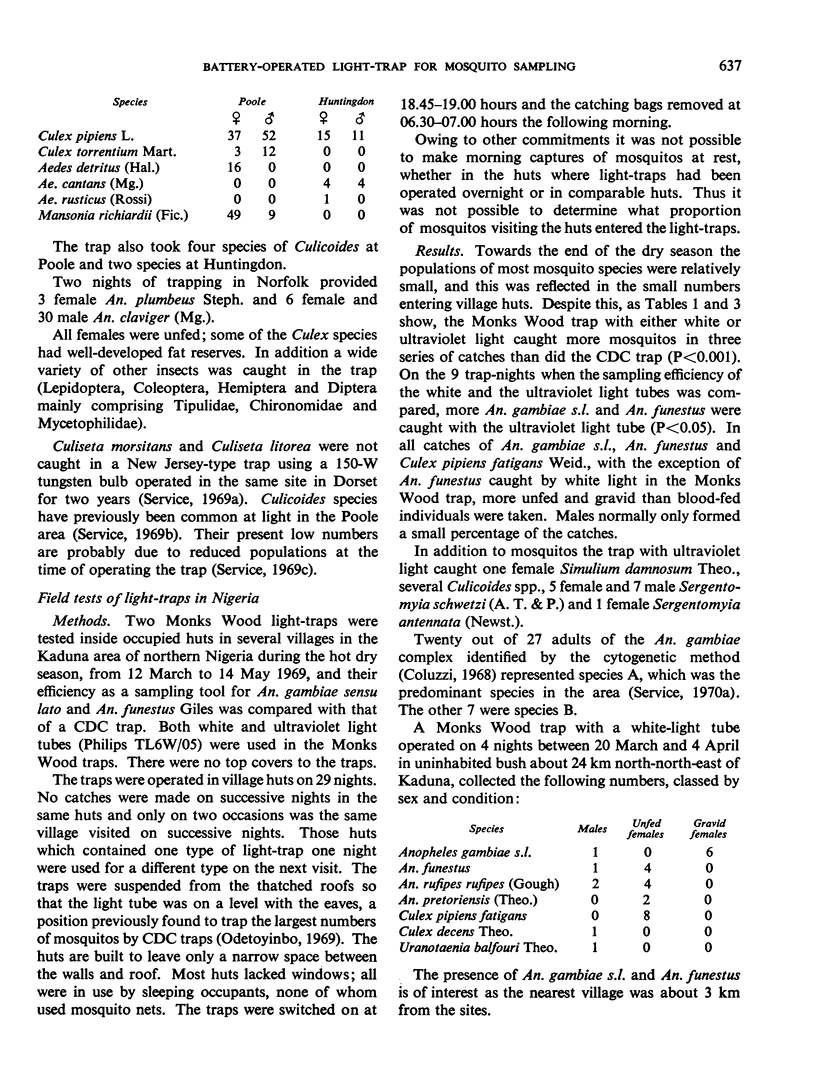
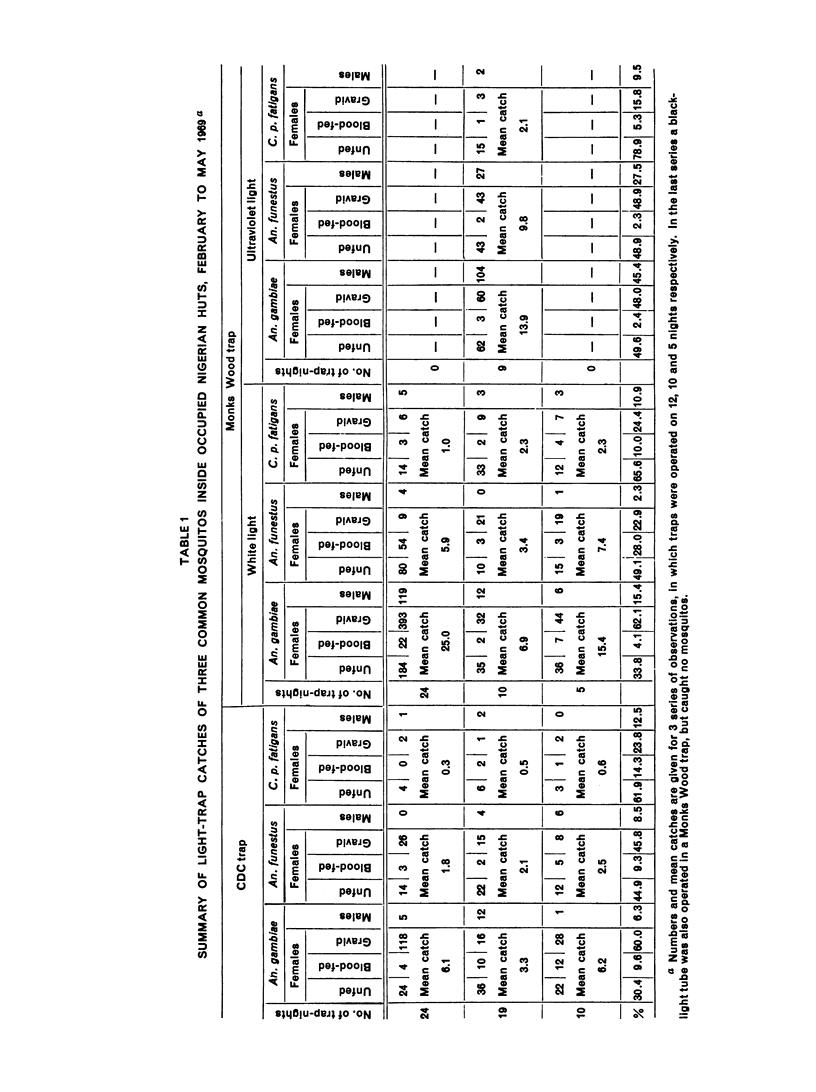


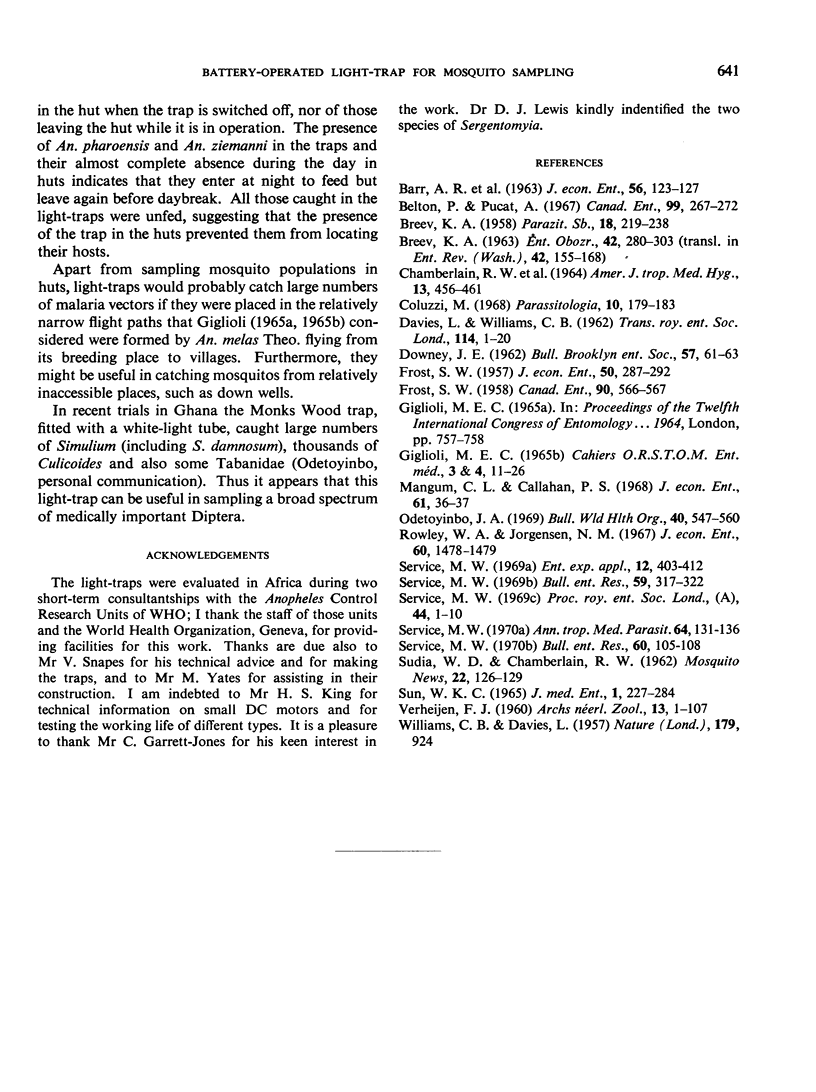
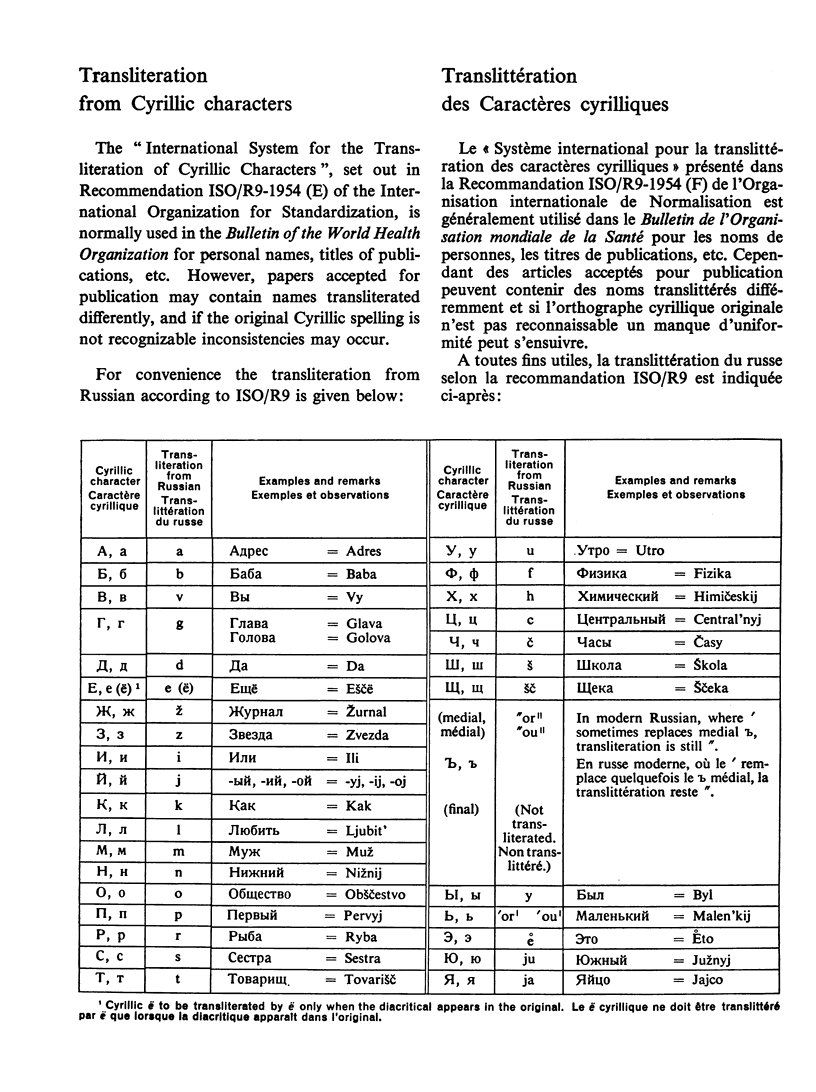
Images in this article
Selected References
These references are in PubMed. This may not be the complete list of references from this article.
- CHAMBERLAIN R. W., SUDIA W. D., COLEMAN P. H., BEADLE L. D. VECTOR STUDIES IN THE ST. LOUIS ENCEPHALITIS EPIDEMIC, TAMPA BAY AREA, FLORIDA, 1962. Am J Trop Med Hyg. 1964 May;13:456–461. doi: 10.4269/ajtmh.1964.13.456. [DOI] [PubMed] [Google Scholar]
- Mangum C. L., Callahan P. S. Attraction of near-infrared radiation to Aedes aegypti. J Econ Entomol. 1968 Feb;61(1):36–37. doi: 10.1093/jee/61.1.36. [DOI] [PubMed] [Google Scholar]
- Odetoyinbo J. A. Preliminary investigation on the use of a light-trap for sampling malaria vectors in the Gambia. Bull World Health Organ. 1969 Apr;40(4):547–560. [PMC free article] [PubMed] [Google Scholar]
- Service M. W. Identification of the Anopheles gambiae complex in Nigeria by larval and adult chromosomes. Ann Trop Med Parasitol. 1970 Jun;64(2):131–136. doi: 10.1080/00034983.1970.11686674. [DOI] [PubMed] [Google Scholar]
- WILLIAMS C. B., DAVIES L. Simuliidae attracted at night to a trap using ultraviolet light. Nature. 1957 May 4;179(4566):924–925. doi: 10.1038/179924b0. [DOI] [PubMed] [Google Scholar]



